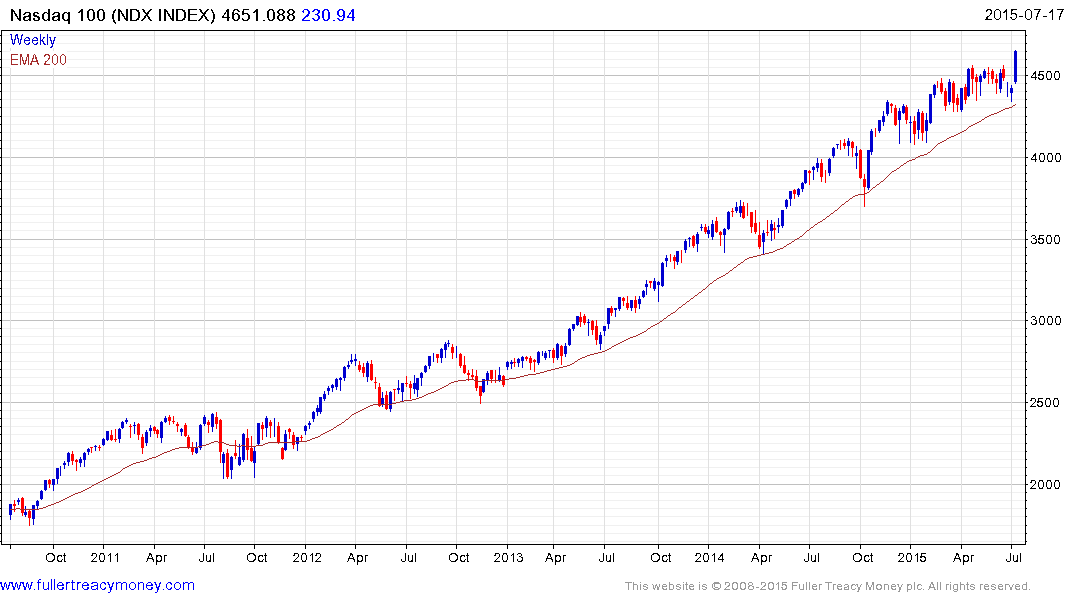Silicon Valley Does Not Believe U.S. Productivity Is Down
This article by Timothy Aeppel for the Wall Street Journal may be of interest to subscribers. Here is a section:
“I’m always reluctant to point a finger at failure in measurement because it feels like you’re making excuses, ” says Marco Annunziata, chief economist for General Electric Co. One explanation for the paradox of low productivity in a time of technical advances may be the uneven way innovation spreads, he says. Some firms gobble up new technology while others don’t, so productivity growth could be lagging because many U.S. companies are laggards.
American business since the recession has, in fact, been stingy about investing in new equipment.
It may also be harder for companies to charge higher prices for innovated product lines, Preston McAfee, Microsoft Corp.’s chief economist says. For instance, when UPS started using new GPS technology to speed package deliveries, it couldn’t charge more for the improvement in service because FedEx and other carriers could easily match them.“Maybe our mysterious productivity gain is in the form of less inflation than we deserve,” Mr. McAfee says.
Back at Google, Mr. Varian admits that slow and uneven adoption of new technology puzzles him. “If you go to Europe,” he says of restaurants there, “all the servers have hand-held devices for ordering, payment.” But the technology has yet to spread across the U.S., even though it would make a slice of the economy more productive.
Here is a link to the full report,
Productivity is the kind of subject that gets economists animated with some saying they see none over the last decade and that in fact there is no prospect of it getting better while others believe we are on the cusp of meaningful improvement. At this service we fall squarely into the latter camp.
It’s easy to become disillusioned with the stream of cat videos on YouTube and the constant status updates and tweets by those around us and to conclude that no economic value has been created. However when you want to fix something small on your car or arrange a playdate, soccer game or other social engagement the majority of people now turn to these services. Regardless, this is already in the price. We might argue whether economic figures effectively capture productivity but the market prices them in not least in corporate profits. What we should be concerned with is the potential for productivity gains in future.
Technological innovation is rapidly advancing. Industrial automation is enhancing productivity by reducing the number of employees required to do the same work and by lengthening the work day since robots don’t need breaks. Teamsters and hauliers represent heavily regulated employment sectors and they are likely to come under considerable pressure in the next decade with advances in supply chain management and autonomous transportation.
One of the primary reasons biotechnology shares are currently doing so well is because of evidence that years of research is reaching commercial utility. More people that are living longer, more productive lives cannot but have an economic benefit.
The application of Moore’s Law to solar technology in particular but also other renewable energy sectors is a major long-term disruptive influence on the energy sector. Recent inventions that mimic the natural photosynthesis of plants in the lab suggests that while energy prices have fallen because of additional supply from unconventional sources, the potential for them to stay low because of future technological innovation is non-trivial.
While not specific to developed economies, the trend of improving governance in less developed economies means that innovative technology we are familiar with will be available to considerably more people in the next decades as hundreds of millions of people are lifted out of poverty and reach their productive capacity. The companies we regard as Autonomies represent some of the primary beneficiaries of this evolution.

The Nasdaq-100 Index plays host to a considerable number of the company’s driving technological innovation. The Index surged higher this week to reassert its medium-term uptrend not least because of Google’s decision to control spending on vanity projects.


